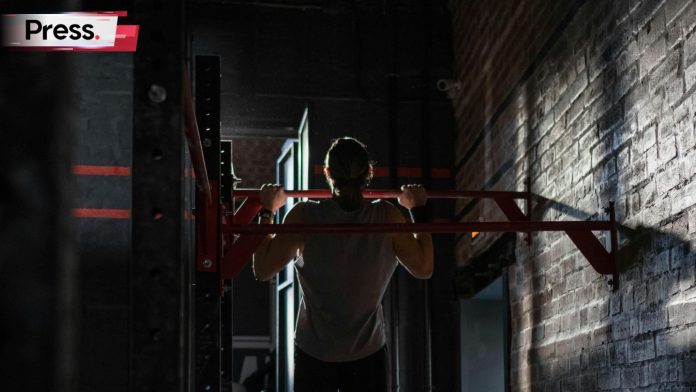Key Takeaway
- Calisthenics improves total‑body strength through simple, compound movements.
- It suits all levels by adjusting leverage, reps, tempo, and range of motion.
- For fat loss, nutrition matters most; training supports a sustained energy deficit.
- Great for Malaysians juggling long workdays, limited gym access, and small home spaces.
- Consistency > complexity. Start small, master basics, and progress weekly.
Table of Contents
ToggleA calisthenics workout plan builds strength, mobility, and endurance using your bodyweight; no equipment is required to start, and by applying disciplined, progressive training.
What Is a Calisthenics Workout Plan?
A calisthenics workout plan is a structured routine built on bodyweight movements like push‑ups, squats, lunges, pull‑ups, dips, and planks. It replaces external weights with the natural resistance of your body, emphasising control, stability, and gradual progression.
Unlike machine‑based programs that often isolate muscles, calisthenics emphasises multi‑joint, functional patterns, the kind that help you carry groceries, climb stairs without getting winded, or keep up with your kids at the park.
In Malaysia, where workdays can run long and gym fees/commutes add friction, calisthenics is an accessible path to fitness. You can train in your living room, a playground, or a shaded spot at a neighbourhood park.
How Does Calisthenics Build Strength Without Weights?
Your body is the weight. By changing leverage, tempo, range of motion, and angles, you can make familiar movements challenging:
- Regular push‑up → elevate the feet for a decline push‑up.
- Bodyweight squat → pause at the bottom for 2–3 seconds.
- Inverted row → move your feet forward to reduce leverage.
Over time, this approach can improve balance, postural control, and muscle development by emphasising compound, multi‑joint patterns and good technique.
Benefits of Calisthenics
- Accessibility & Flexibility – Train anywhere. No commute, no waiting for machines. A short morning session at home or under a tree is enough.
- Cost‑Effective Fitness – No monthly fees to get started. A pull‑up bar or sturdy railing expands your exercise options.
- Joint & Core Health – Compound moves challenge stabilisers and coordination, supporting the knees, hips, spine, and shoulders.
- Supports Fat Loss & Lean Muscle – Circuits that use multiple muscle groups keep your heart rate up while building strength. Pair with balanced nutrition for best results.
How to Start: Beginner Calisthenics Workout Plan
Start simple and prioritise form. When you can complete the listed reps with clean technique, add reps or progress the variation.
Exercise | Sets | Reps | Rest |
Bodyweight Squat | 3 | 12–15 | 45 sec |
Incline or Knee Push‑Up | 3 | 8–12 | 60 sec |
Glute Bridge | 3 | 10–15 | 45 sec |
Plank Hold | 3 | 20–40 sec | 60 sec |
Standing Shoulder Circles | 2 | 15 | 30 sec |
Progression Tips
- Train 2–3 days/week to start, leaving at least one rest day between similar muscle groups.
- Once you can complete all reps with ease, add 2–3 reps or increase the difficulty (e.g., lower the push‑up incline).
- Add light jogging or skipping on off days to build cardio fitness.
Use your home creatively, low table for incline push‑ups, towel on tile for sliding leg curls, staircase for step‑ups or calf raises. A playground bench works for dips.
Intermediate Calisthenics Routine
Increase challenge via angles, controlled tempo (e.g., 3 seconds down, 1 second up), and combination movements.
Exercise | Sets | Reps | Rest |
Regular Push‑Up | 4 | 12–15 | 60 sec |
Bulgarian Split Squat (each leg) | 3 | 10–12 | 60 sec |
Pike Push‑Up | 3 | 8–12 | 60 sec |
Hanging Knee Raise* | 3 | 10–15 | 45 sec |
Side Plank (each side) | 3 | 25–40 sec | 45 sec |
*Use a bar, sturdy railing, or captain’s‑chair station if available.
Routine Flow
- Warm‑up (5–7 min): Jumping jacks, shoulder rolls, dynamic hip/ankle work.
- Main: Perform 3–4 exercises in a circuit; rest 60 sec between rounds; 3–4 total rounds.
- Cool‑down: Light stretches and deep breathing.
Advanced Calisthenics Program (Skill‑Focused)
Advanced training emphasises precision, patience, and progression.
Advanced Move | Prerequisite | Primary Muscles |
Handstand Push‑Up | Strong Pike Push‑Up | Shoulders, triceps, core |
One‑Arm Push‑Up | 20+ strict push‑ups | Chest, triceps, obliques |
Pistol Squat | Bulgarian split squat competency | Quads, glutes, balance |
Front Lever (progressions) | Pull‑up + core control | Lats, abs, grip |
Muscle‑Up | Strict pull‑up + dip | Back, shoulders, arms |
Training Philosophy
- Quality over quantity: Every rep is deliberate; stop 1–2 reps before form breaks.
- Mobility before mastery: If joints feel tight, shorten the range and mobilise.
- Plan progressions: e.g., assisted pistols → full pistols → jump pistols.
- Film your form: A quick video helps you spot compensations.
Where to train in KL: Popular community‑reported spots include Taman Tasik Titiwangsa and areas near Bukit Jalil National Stadium, which often have pull‑up/calisthenics stations. Availability varies by site; check locally.
Read More: How to Do a Muscle‑Up: Complete Guide
Best Calisthenics Plan for Fat Loss
Fat loss primarily requires a sustained energy deficit (burning more calories than you consume). Calisthenics helps by combining strength and cardio in time‑efficient circuits.
Sample Fat‑Loss Circuit (30–40 minutes)
Round | Exercise | Duration |
1 | Jump Squats | 45 sec |
2 | Push‑Ups | 45 sec |
3 | Mountain Climbers | 45 sec |
4 | Bodyweight Rows (under bar/table) | 45 sec |
5 | Plank Shoulder Taps | 45 sec |
Repeat 3–4 rounds with 60 sec rest between rounds.
Tips
- Train early mornings when it’s cooler; hydrate well in hot, humid weather.
- Favour nutrient‑dense local foods: grilled ikan bakar, tofu/tempeh, eggs, chicken, mixed vegetables. Limit deep‑fried dishes and sugary drinks.
How Calisthenics Builds Muscle
Muscle grows with progressive overload, increasing resistance, total volume, or time under tension over time. With bodyweight training, you can:
- Manipulate tempo: 3 seconds down, 1 up; add pauses at the bottom.
- Change leverage: Elevate feet for push‑ups; move feet forward on rows.
- Increase volume: Add sets/reps across the week.
- Prioritise compounds: Pull‑ups, dips, squats, push‑ups, planks/leg raises.
Expect a strong, athletic look with consistent training and nutrition; very large increases in size generally require higher volumes, long timelines, and supportive nutrition.
Weekly Calisthenics Schedule
Day | Focus | Example Routine |
Monday | Push (Chest/Shoulders/Triceps) | Push‑Ups, Dips/Bench Dips, Pike Push‑Ups |
Tuesday | Pull (Back/Biceps) | Inverted Rows, Pull‑Ups/Assisted, Dead Hangs |
Wednesday | Core + Mobility | Planks, Hollow Holds/Leg Raises, Hip Openers |
Thursday | Legs | Squats, Lunges, Glute Bridges, Calf Raises |
Friday | Full‑Body Circuit | Mix Push + Pull + Core |
Saturday | Active Rest | Light jog, yoga, easy cycling, long walk |
Sunday | Rest | Recovery, sleep, hydration |
Frequency guidance:
- Beginner: 2–3 days/week total‑body or alternating splits.
- Intermediate: 3–4 days/week.
- Advanced: 4–5 days/week, with careful recovery between similar muscle groups.
Session length: 30–60 minutes is plenty when focused.
Do’s and Don’ts
Do’s | Don’ts |
Warm up wrists/shoulders/hips before sessions | Skip warm‑ups or only stretch after pain appears |
Master form before advancing | Chase flashy moves too soon |
Track progress weekly | Repeat the same workout forever |
Mix strength and mobility work | Ignore mobility or recovery |
Eat sufficient protein and hydrate | Depend solely on exercise for results |
Common Mistakes to Avoid
- Skipping fundamentals: Handstands before strong push‑ups invite injury.
- Neglecting rest: Muscles adapt during recovery.
- Ignoring nutrition: You can’t out‑train a poor diet.
- Daily maxing out: Leave at least a day between hard sessions for the same muscle group.
- Chasing reps over form: Quality reps drive progress and reduce risk.
Summary
Calisthenics isn’t a trend; it’s a lifelong practice of control, strength, and self‑discipline. Whether you’re a student in Penang, a working adult in KL, or a retiree staying active at home, this training adapts to you. Start where you are, master the basics, add one new challenge each week, and be sure to follow PR agency Malaysia for more information.
Disclaimer: All of the content was thoroughly fact-checked and verified by our editorial team to ensure accuracy, clarity, and reliability.
FAQs About Calisthenics Workout Plan
Is calisthenics good for fat loss?
Yes, especially when paired with a sustainable nutrition plan that maintains an energy deficit.
Can you build muscle with calisthenics alone?
Absolutely. Use progressive overload (harder variations, added sets, slower tempos) and adequate protein.
How long to see results?
Many beginners notice strength/endurance improvements in 2–6 weeks. Visible muscle changes often take 6–12+ weeks, varying by genetics, diet, sleep, and training consistency.
Do I need equipment to start?
Not necessarily. Bodyweight alone works. A pull‑up bar or sturdy railing expands your options.
How many days per week should I train?
2–5 days/week can work depending on level (rough guide: 2–3 novice, 3–4 intermediate, 4–5 advanced). Alternate muscle groups to recover well.
Is calisthenics suitable for women?
Yes. It builds strength and muscle for women and men. Large increases in size generally require sustained progressive training and supportive nutrition; results vary by individual.


